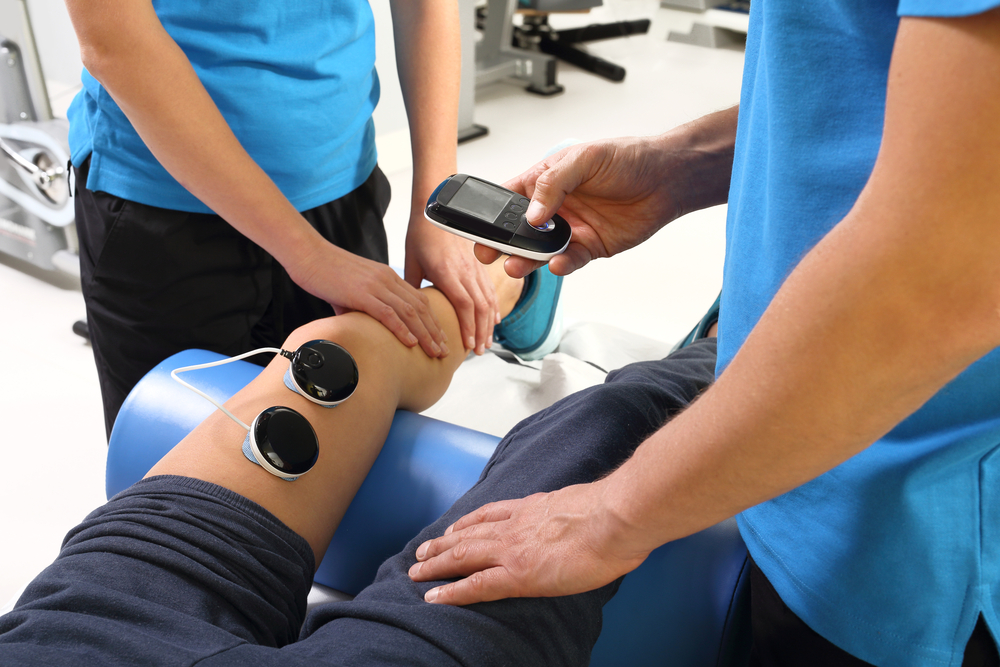
29 Aug Physical Therapy After A Knee Injury
It’s impossible to know just how much you rely on your knees until one of these critical joints gets hurt. In some cases, knee injuries can be so severe that full replacement surgery becomes necessary.
If you don’t take the proper measures after you’ve sustained a knee injury, you could experience pain for the rest of your life or even become immobile. The right physical therapist will, however, be able to get you back on your feet in no time.
What Is Physical Therapy?
Physical therapy is a medical technique that is used to treat a variety of different conditions. People from all walks of life benefit from physical therapy, and this type of treatment becomes even more important when you’ve gone through surgery or sustained an injury.
The goal of physical therapy is to return your mobility and strength to normal levels, and a physical therapist may use a wide array of different techniques to accomplish this aim.
How Can a Physical Therapist Help with Your Knee Injury?
The physical therapy process usually begins with a visit to your regular doctor, but you can also seek therapy by contacting a physical therapist directly. Either your doctor or your physical therapist will start with a routine physical exam that is designed to pinpoint the cause or causes of the symptoms you’re experiencing.
Next, you will be asked to perform a variety of range-of-motion (ROM) exercises, which will determine the nature and extent of your condition.
From there, your physical therapist may order various imaging tests that may be useful in determining the source of the issue. Imaging tests are only used, however, in circumstances in which your physical therapist can’t determine the exact nature of your issue with a physical exam or ROM tests.
The Knee Injury Physical Therapy Process
After your physical therapist has determined the exact cause and nature of your knee injury, this medical professional will use a variety of techniques to improve your symptoms. Among these techniques are manual therapy, which is like massage, ultrasound therapy, joint mobilization, traction, and various other established therapeutic techniques.
There is no “one-size-fits-all” approach to physical therapy. Your physical therapist will work closely with both you and your general practitioner to develop a personalized recovery plan that takes the particulars of your situation into account.
Your relationship with your physical therapist will be cooperative and dynamic, and you’ll have plenty of opportunities to make your own suggestions and develop the techniques that you believe will speed up your recovery.
Physical Therapy Exercises to Try After a Knee Injury
The physical therapy process doesn’t end when you leave your therapist’s office. Performing exercises from home is an integral part of going through physical therapy, and in most cases, you’ll be asked to perform a set series of exercises 1-3 times per day.
Your physical therapist will work with you to help you find the techniques that work best for your unique situation, and here are a few techniques that physical therapists commonly prescribe in the wake of knee surgery and other types of knee injuries:
1. Wall Slides
- Lay down flat on your back with your hips about two feet away from a wall
- Bend your affected knee at a 90-degree angle, and place the appropriate foot flat on the wall
- Slowly slide your foot up and down the wall to flex your knee with minimal pressure
- Slide your foot up and down around 10-15 times
2. Calf Stretch
- Stand in front of a wall at the distance of your outstretched arms
- Place your hands flat on the wall, and bring your knee forward
- Shift your weight forward onto your knee, and bend your elbows
- Return to the starting position, and repeat this stretch around 10 times
3. Groin Stretch
- Sit on the floor on a soft surface
- Put your feet straight in front of you, and then gradually bring the soles of your feet together
- Using your elbows, press down on the insides of your knees to push them downward
- Hold this position for 10-15 seconds, and then release
- Repeat 10 times or as recommended by your physical therapist
4. Straight Leg Raises
- Lay flat on your back on a soft surface
- Bend your healthy knee, and stretch out your affected knee in front of you
- With your leg straight, slowly raise your affected knee as high as you can comfortably
- Hold this position briefly, and then gently lower your leg to the ground
- Repeat 10 times
5. Toe Raises
- Stand in front of a wall, and place your hands flat on the surface of the wall
- Spread your legs until they are parallel with your shoulders, and then stand on your toes
- Remain in this position for around 5-10 seconds, then generally lower your heels until they touch the ground
- Repeat 10 times
6. Quarter Squat
- Stand with your feet shoulder-width apart
- With your back straight, bend your knees slightly until your head lowers by around six inches
- Raise back into the starting position, and repeat this exercise around 10 times
Physical Therapy After a Knee Injury: Summing It Up
When you’ve sustained a knee injury, the last thing you want to do is simply sit around and wait until you feel better. Thankfully, physical therapy is now an integral part of most post-surgery treatment regimens.
Even if you’ve simply sustained a knee injury at home, visiting a physical therapist or trying physical therapy exercises from home can exponentially increase your chances of experiencing a full recovery.
Physical therapy is non-invasive, low-impact, and incredibly beneficial when a knee injury threatens to dramatically harm your quality of life. Rely on an experienced physical therapist in your community to guide you through the recovery process and provide you with techniques that will increase your overall resilience for years to come.




Sorry, the comment form is closed at this time.